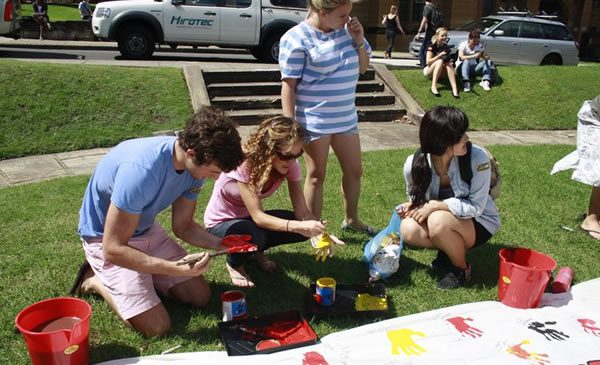
The annual National Close the Gap Day held on March 24 serves as a focal point of efforts on the Close the Gap campaign. This year was really successful, with over 850 individual events held across the nation. These events – though facilitated by the Close the Gap campaign coalition – were run independently by organisations and individuals across the community including school groups, religious institutions, and community groups all concerned with the plight of indigenous health in Australia.
One such close the gap event was held at the University of Sydney. Run by a coalition of University societies including Oxfam Sydney University, the event saw people from across the walks of campus life attend.
Attendees were treated to a live didgeridoo show and a barbeque of kangaroo sausages in what was an extremely successful event, raising awareness of the campaign on campus. During the event people were also encouraged to dip their hand in paint and leave an imprint on a Close the Gap banner as a sign of support for the campaign. This event demonstrated just some of the innovative ideas used by event organisers across the nation to raise awareness of the state of indigenous health in Australia.
In a country where the indigenous population has an average life expectancy some 10-20 years less than the non-indigenous population, the Close the Gap campaign is unfortunately a necessary one. Since its conception in 2006, this campaign has played an important role in pushing the agenda and raising awareness in both government and the community at large. The campaign’s purpose of raising awareness of indigenous health is a longitudinal one which has already had several key successes.
Most crucial of its successes has been the pushing of the indigenous health agenda in the political sphere, which in 2009 witnessed the launching of the Australian Government’s Closing the Gap strategy for reducing indigenous disadvantage. However, there is still a long way to go in achieving health equality between indigenous and non-indigenous Australians, a long way to close the gap.
Although National Close the Gap Day has been and gone, the poor state of indigenous health in Australia continues. Show your support for this campaign by joining over 140,000 others in signing the Close the Gap Pledge and demanding indigenous health equality.